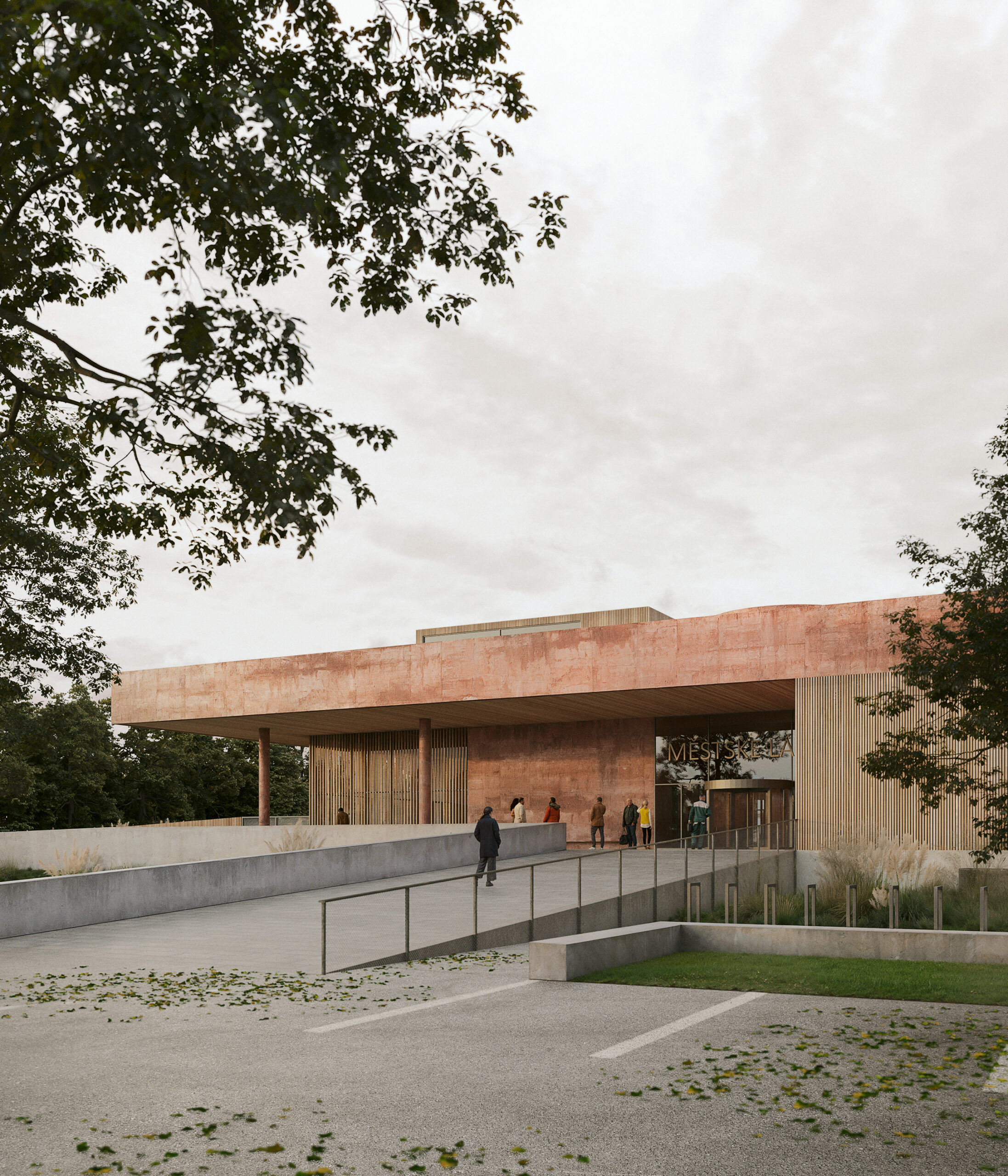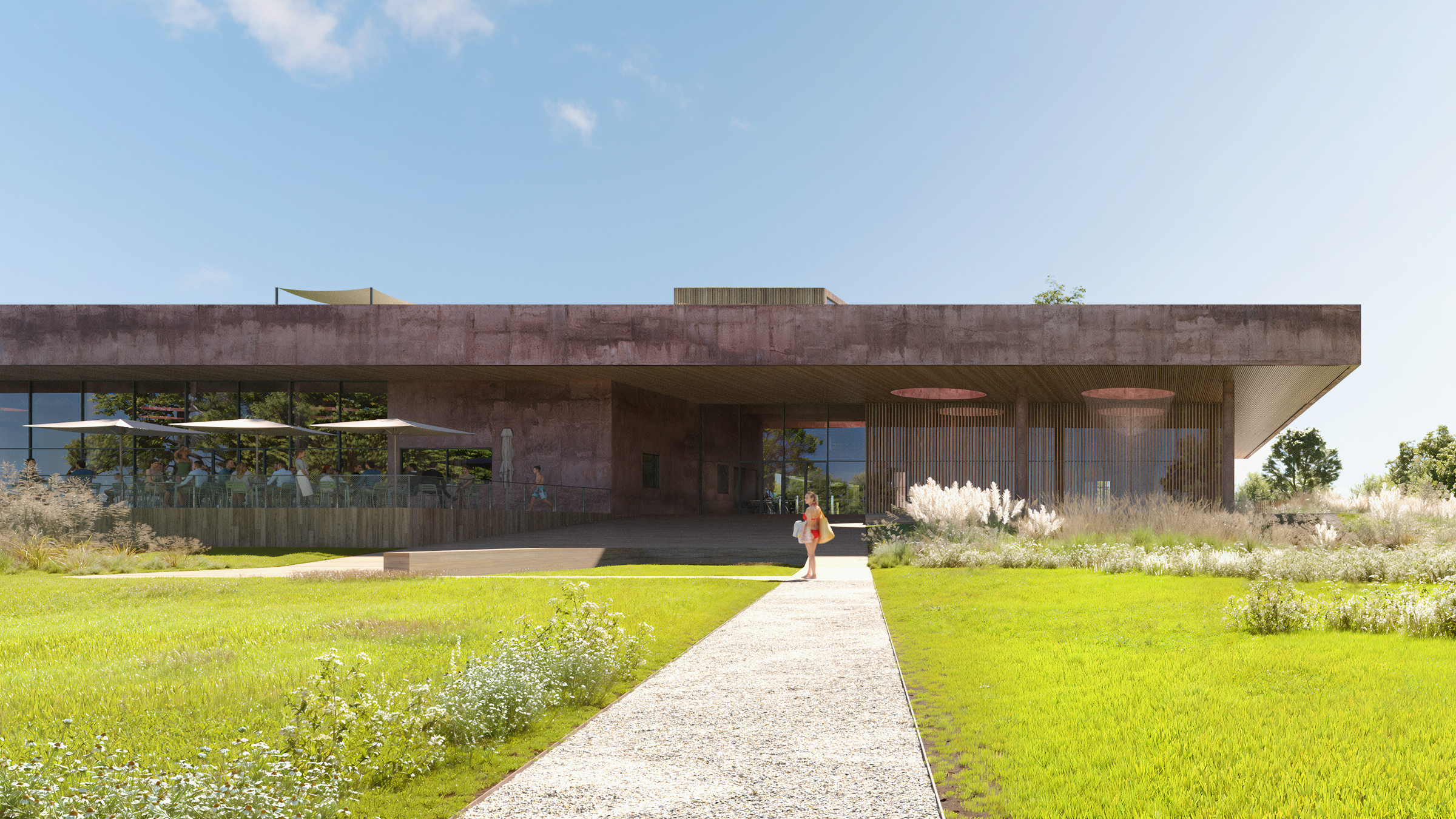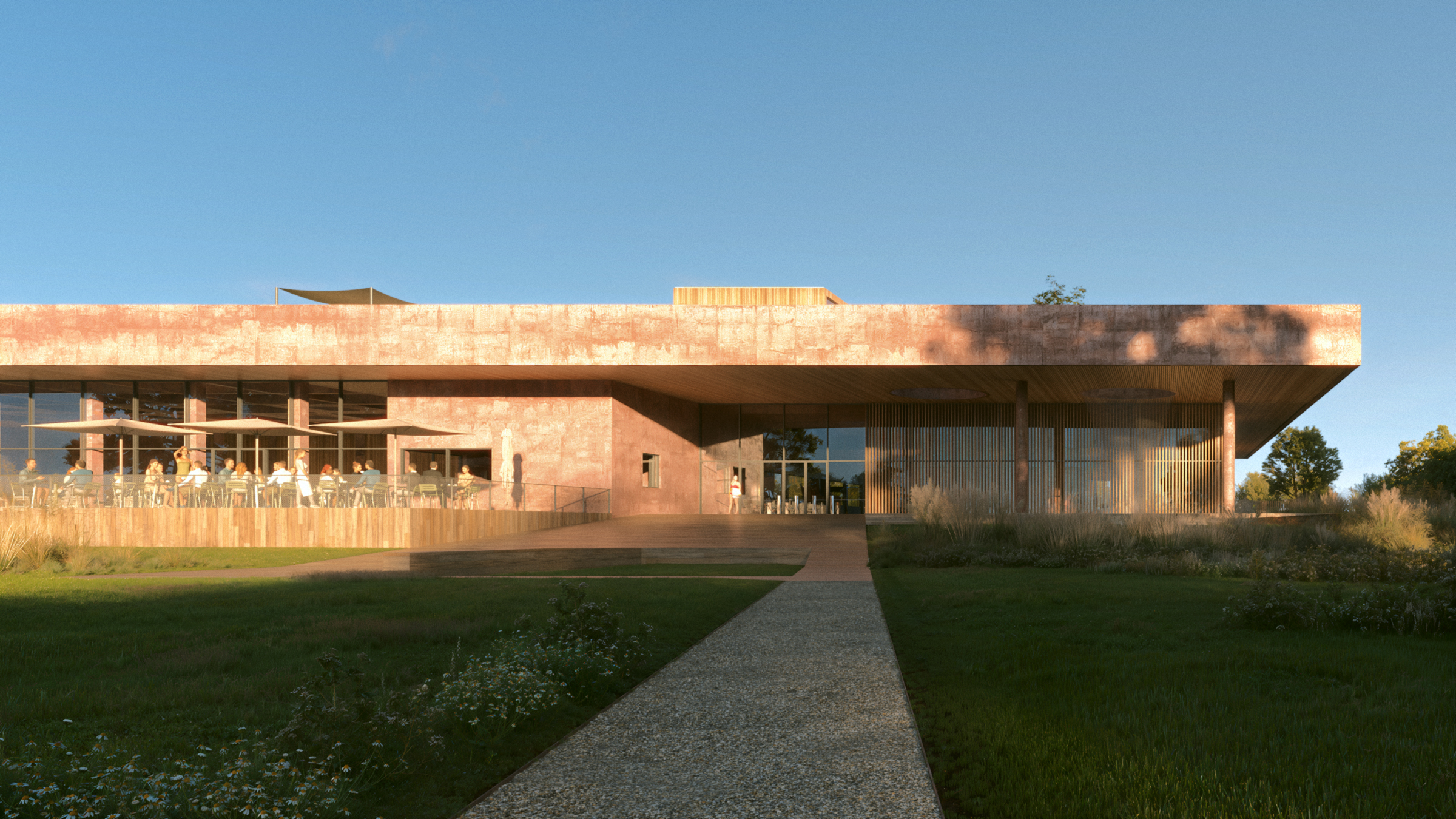
Different light scenarios in architectural visualizations
28th of April 2024 — Martin Janousek
I decided to write an article about various lighting conditions, what do these look like and possible pros/cons of using them. Let's dive in!
I selected the projects that are sample examples of our work for the visual themes mentioned in this article.
Direct sunlight: classic
You know it: blue sky (with or without clouds), stronger highlights, and contrast. Usually, one side of the building is directly lit by the sun while the other is in shadow. This type of lighting emphasizes the three-dimensionality of the building.
Note: you should (almost) never use the sun from behind the camera - it makes the building and its surfaces look flat and bleached.
Most clients love this scenario as it tends to create a positive mood in combination with green vegetation.

Overcast or soft light
This is usually a more subtle scenario and is more about sophistication and refinement. It makes a space to highlight more subtle details which would be otherwise lost due to strong contrast. It can also help integrate the design better into its surroundings, being more discreet. Also works quite nicely in winter/autumn settings.
The danger is that without persuasive details it may look too simple, almost plain (and unfinished).
Sunset and late afternoon
More dramatic scenario, contrasty and warmer. The deep sun during the last few minutes of daylight. In interiors, the sun shines deeper into the rooms and bathes everything in a warm light. In exterior scenario, a building can show different facets at the same time. Eg. lower half is in the shade and the lights can come on like in a night picture while the upper half is still bathed in warm sunlight and expresses it´s full plasticity.
Image by J&H


Evening and blue hour
Shortly after sunset and just before the dark night begins, the colors blue and yellow dominate. Warmly lit and the cool unlit areas often create beautiful color contrast. The plasticity here is not created through the brightness contrast but rather through the color contrast.
Night
This is actually quite a rare scenario and is usually combined with some kind of interesting (even dramatic) artificial lighting. The environment is suppressed so that the main focus can be on the building.
Image by J&H


Backlit
The back light might combine the advantages of an overcast mood with the friendliness of sunlight. Camera pointed in the direction of shining sun shows the silhouette of the building. The building itself appears to be flat and allows interesting insights.
Conclusion
Of course, there are many more nuances to the sky and lighting (atmosphere impact, etc.) but those are beyond the scope of this article.
It is also dependent on how far we go in the photorealism of the scene - which may not always be the goal. Sometimes we and our clients want to transfer the raw feelings and emotions, and then the way we work with colors and shadows is adjusted to reach it. There is no "one size fits all" - it all depends on the message we want to convey with the picture.


